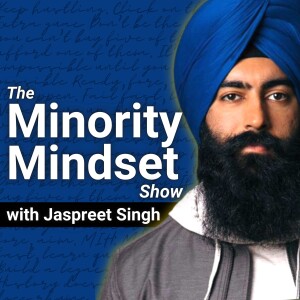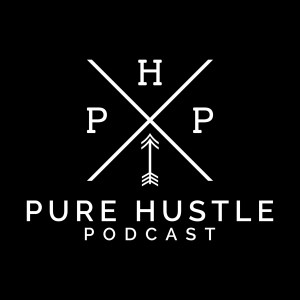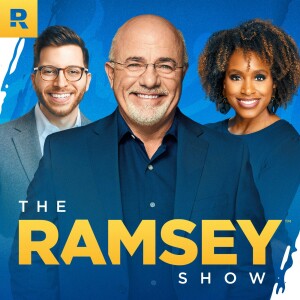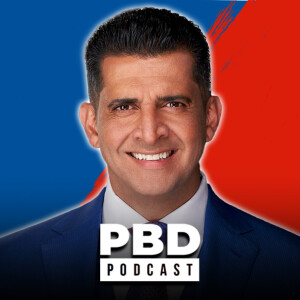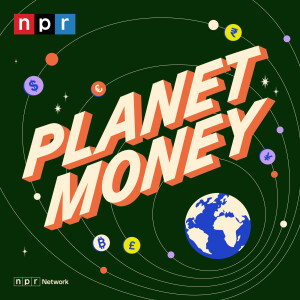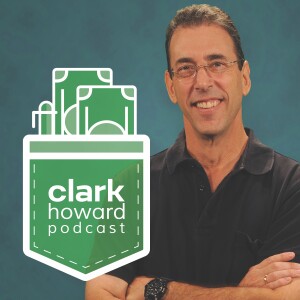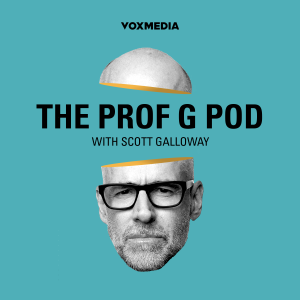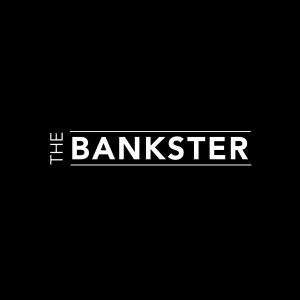

The Bankster Podcast
https://www.thebanksterpodcast.com/home?format=RSSEpisode List

Podcast Contest
I submitted the above trailer as part of a podcast competition sponsored by Squarespace and Gimlet Creative. I also announce the end of Season 2. As always, I can be reached for comments, feedback, or questions on twitter or via my website www.thebanksterpodcast.com.
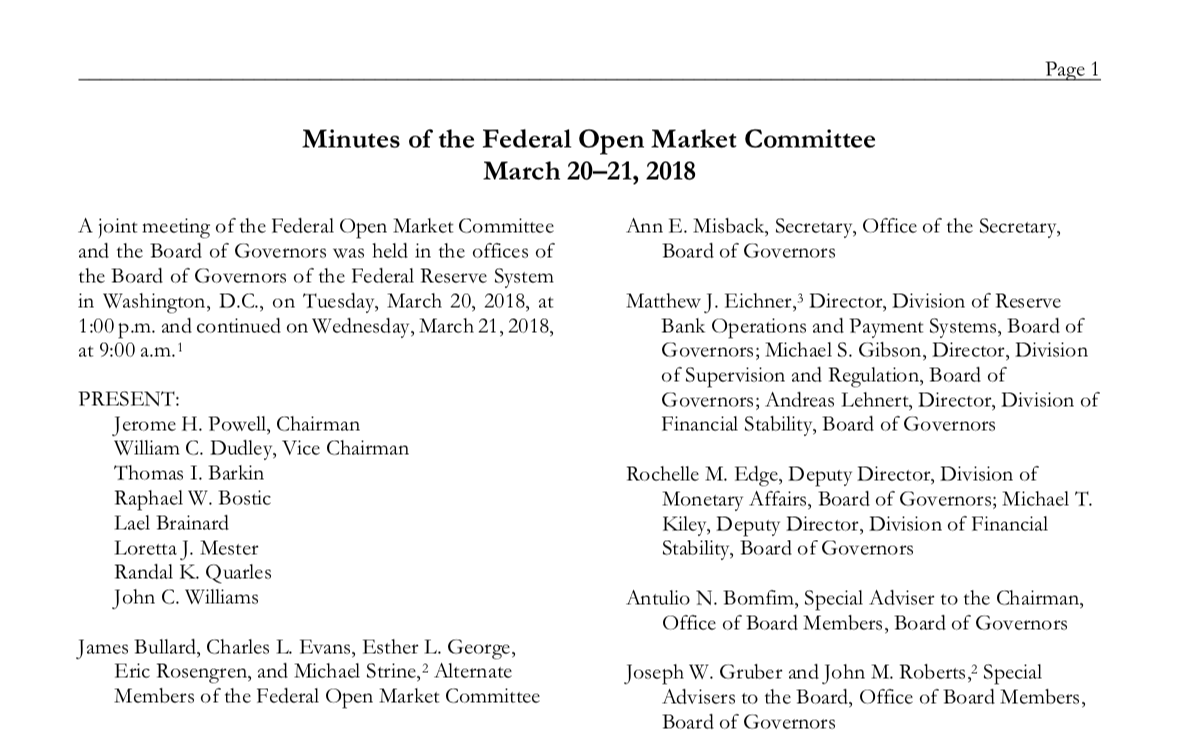
Meeting Minutes Matter
Why the Meeting Minutes of the Federal Open Market Committee matter. As always, I can be reached for comments, feedback, or questions on twitter or via my website www.thebanksterpodcast.com.IntroductionI am Alexander Bagehot and you’re listening to The Bankster Podcast, the only podcast dedicated to the fascinating and ever more consequential world of central banking, the centralverse.On today’s episode we’re going to talk about the FOMC Meeting Minutes, two reasons they were in the news this week, and an example of how much attention they get from financial markets the world over. But first a quick update about our new and exciting website - www.centralverse.org.If you go to the site right now, you’ll get an “under construction” notice. However, as listeners to The Bankster Podcast I wanted to extend a special invitation to follow the link on the homepage of centralverse.org called “Sign Up”. Using your email address you’ll be able to create an account and stay up to date at each step of the process as the Centralverse website grows and expands. There is also a voluntary option to include your phone number and receive the updates texted directly to you. By signing up via email or phone number you’ll be able to contribute to the development of the site. What aspects of the Centralverse do you want explained? What questions do you have about how the Federal Reserve works? You can contribute or simply observe by signing up at www.centralverse.org.Ok, onto the topic of today’s episode - The FOMC Meeting Minutes and why they matter.FOMC Meeting MinutesThe FOMC meeting minutes came up in two seperate threads of articles this week. For those of you unfamiliar with the idea of meeting minutes let’s give you something to compare it to. Imagine a spectrum of details about a meeting. The farther left you go on the spectrum the fewer details. The farther right you go on the spectrum the more details provided. On the far left side you may have super basic information like when and where the meeting occurred. On the far right side of the spectrum you may have information like a full transcript of every word spoken and action taken. On this spectrum, meeting minutes lie somewhere near the center. Meeting minutes are detailed notes about what was discussed, but they aren’t full transcripts and in the Fed’s case there aren’t direct quotes nor comments associated to specific individuals.And that’s actually where the first thread of articles came from. Here’s a line from the minutes of the March 21st FOMC meeting, “with regard to the medium-term outlook for monetary policy, all participants saw some further firming of the stance of monetary policy as likely to be warranted.”To a casual reader, this sentence, albeit full of Centralverse language, is nothing particularly telling. However, to the observant Fed Watcher there is something strange about the word, “all”. See, St Louis Fed President, James Bullard, is unique among his colleagues. His is the lowest dot on the dot plot. The one that doesn’t increase into the future, which means he believes the optimal Federal Funds interest rate going forward is the one that we currently have. And he doesn’t even participate by picking an optimal long-run rate.So when the meeting minutes claim that “all participants saw” Federal Funds rate increases in the near future, it caught Fed Watchers by surprise. This was brought to my attention by an article in the WSJ by Michael Derby. “FOMC minutes are one of the most important ways the central bank communicates with the public… [and] small changes can mean big things.” Shortly after the release of the meeting minutes President Bullard was asked what the meaning of the word, “all” was in the sentence in the meeting minutes. He reported that he wasn’t sure, but that his view of the optimal future path of policy hadn’t changed - in other words he was ready to keep interest rates as they were. Now both his statement and the meeting minute notes suggesting that all FOMC members wanted to raise interest rates cannot be true at the same time.I’m not going to go into any more detail about whether the writer of the meeting minutes made an error or misinterpreted President Bullards stance. However, you can see that literally every single word in the meeting minutes matter.Now onto the second mention of the meeting minutes this week. This time the comments revolved around meeting minutes that haven’t been released yet. See, this past Wednesday, May 2, the FOMC had the final day of meetings for the period and announced that the current policy would not be changed. The target interest rate range would remain and the monthly amount by which the balance sheet is shrinking would also remain the same. The official statement basically said, “nothing to see here folks. Our thoughts haven’t officially changed since last time we got together in March.”However, and this is a very important however, that doesn’t mean there wasn’t useful information discussed in the actual FOMC meeting. And when and where will we find out more about this useful information? You guessed it, when the FOMC meeting minutes are released. The meeting minutes are released exactly three weeks after the FOMC meeting statement. So in about two and half weeks from the publication of the podcast we will get more information on the important conversations that took place at the meeting. For example, were there any hints or strong feelings expressed about how many more interest rate increases the committee expected for the calendar year? How far above 2% might the committee be willing to let inflation rise? Were there any more talks about changing policy frameworks like nominal GDP targeting replacing inflation targeting?All of this - or at least hints will come out at the next release of the FOMC Meeting Minutes!ConclusionToday’s episode was written, edited, and produced by me, Alexander Bagehot. Go to www.thebanksterpodcast.com to sign up for the show notes and get in touch with me directly. Thanks to all of you for listening, and I’ll see you next time on The Bankster Podcast!

Episode 1 - Show No Signs of Panic (Rebroadcast)
IntroWelcome to the Bankster podcast, my name is Alexander Bagehot and I’ll be your host today. This is Episode 1 - Show No Signs of Panic. Every week we dive into the intricate world of central banking! I summarize the latest news and events catching you up on all things Federal Reserve and monetary policy from around the world. Then I take a more in depth look into a historical event or person that helped shape what central banking is today.On this episode we’ll talk about an experience that Marriner Eccles had as a banker in Utah before he became the 7th Chairman of the Federal Reserve. But first let’s catch you up on what happened this week in the Central-verse. And as an aside, because this is the first episode, Centralverse is not a real word yet, but it’s one that I have made up to describe the deep, fascinating, ever changing, and incredibly consequential world of central bankers and the economies they attempt to support. I’ll start the podcast with pretty simple terms and definitions and build upon that foundation as time goes on.NewsAnd first we are going to start with a very important number in the central-verse. This past friday, at about 8:31am Eastern time my phone began to light up. Over the next 10 minutes or so I got notifications from CNN, WSJ, NYT, and The Economist - an unnecessarily high quantity of push feeds I have set up that on this occasion were sharing one simple piece of information. See, at 8:30am on the first friday of every month the Bureau of Labor Statistics releases their monthly “Employment Situation” report.This is a 39 page report filled with interesting charts, graphs, and tables. However, it is almost universally summarized by one number - the national unemployment rate (which congress tells the Fed they need to maximize, or in other words keep as many people working as is sustainable). All of those notifications on my phone this time were informing me that the number was 5.0%. This number means of the 1000 people in the labor force there are 50 that are looking for a job and haven’t found one. In later episodes we will dive into the significance and intricacies of this number, but for today we’ll leave it at that.Most market players and central bankers received the number relatively positively even though it was a slight uptick from last month’s 4.9%. Think of it this way. In our 1000 people labor force example, last month 49 people were looking for a job. This month there were 50. But instead of thinking of this extra person as someone who lost their job, central bankers and market players read more of that 39 page report and found that this person is someone who was depressed, sitting on their couch, and not looking for a job in February, but in March they saw the economy strengthen got off the couch and started looking. They still haven’t found a job yet, but they believe they can find one, so they are now in the labor force again.Onto the second piece of news we’ll cover this week. Central bankers wield an incredible amount of power over the economy. However, they are limited in the number of tools that they have. The foundational and textbook tool is the ability to signal to the market what interest rates should be, or at least which direction they should be moving. In the United States every six weeks a council convenes in the Eccles building (yes, named after the very Marriner Eccles that will learn about later in this episode).At this meeting the 12 bank presidents and the 7 board of governors of the Federal Reserve System gather to discuss the condition of the national economy. Then a select number of them (more on that later) cast a very simple vote - what to do with interest rates (up/down/unchanged). So given that limited function what are some other options that central bankers have to progress their ideas or influence the economy? Well, one way is by giving public speeches. The 12 presidents and 7 governors frequently speak about their views and opinions about the economy.This is a way for them to let the markets and policy makers know where they stand, what their next council vote might look like, and what they think the Fed should do in the future to foster a healthy economy. This week we heard from a number of officials. In just the seven days I’m covering in this episode (March 30 - April 6) we heard from the presidents of the Fed’s in Boston, New York, Cleveland, Chicago, and St Louis. With the high quantity of speeches being given I won’t go through each of them or even mention the speeches every week. I will however, keep you up to date if the spirit or direction of the content of these speeches changes in a significant way.This week there was a slight shift towards accommodative monetary policy, which for now we will crudely define as keeping interest rates lower for longer. For example, Loretta Mester, the president of the Federal Reserve Bank of Cleveland said she viewed the pace at which they will raise interest rates as, “slightly more gradual than the path [she] foresaw in December”. Similarly, Charlie Evans, President of the Chicago Fed said, “Currently, I believe it will be appropriate to make two more rate hikes this year and then follow a very gradual path of rate increases thereafter.” These were two of the biggest voices of the week suggesting that the council that sets interest rates make gradual increases this year, a subtle, but important shift.As the podcast continues you’ll quickly learn that the Fed talks a lot about interest rates. Simply put, interest rates have a large impact on the two goals that congress told the Fed they are to shoot for (1) maximizing employment and (2) keeping prices stable. Lots more on those goals to come. And now that we’ve covered the new unemployment numbers and the slight shift in the monetary policy outlook of a few leaders of the Centralverse. We are going to dial the clocks back to 1931 - the setting, Utah; to a classic scene of the Great Depression - the eve of a bank run. After this short break.Show No Signs of PanicAll of the information from this story came from Marriner Eccles autobiography, Beckoning Frontiers. Marriner Eccles, the oldest son of an immigrant family, was born in 1890. He was raised on the awe inspiring, western foothills of the Rocky Mountains, in the small town of Logan, Utah six years before Utah was made a state. Although his father had come from an impoverished family in Scotland he had achieved the American dream and was quite wealthy and owned a number of businesses. However, not wanting his children to quote, “grow up in idleness or acquire a taste for easy living” Eccles father sent him to work in one of his lumber yards at eight years of age, “carrying his weight in boxes” where he would be paid, “The rate of...five cents an hour for ten hours’ work.”His father not only wanted him to learn the lessons of a hard day’s work, but he wanted Eccles to learn a business mind. In his autobiography, Beckoning Frontiers, Eccles says, “When I held in my hands the first fifty cents for a day’s labor, my father offered a plan whereby I could be taught to follow in his footsteps and become a capitalist by curtailing the consumption of my current income. At the outset of that first summer he said that if I saved my money until I had one hundred dollars, he would sell me one share of Oregon Lumber Company stock.” (pg 27). Now, I don’t know about you, but I can’t imagine being too inspired at the age of eight by the prospect of lifting boxes for ten hours a day so that I could buy stock in a lumber company. But Eccles stuck it through, and after three summer’s worth of work, he had earned enough to buy that stock and become, in the words of his father, “A capitalist”.Eccles’ business aptitude would be put to the test sooner than he expected. Shortly after returning from serving a two year, two month mission for the Church of Jesus Christ of Latter Day Saints his father passed away suddenly. Eccles took substantial control of his father’s businesses and quickly expanded into a wide range of industries across the west. He was in everything from sugar mills, to railroads, to of course banking, and all this while still in his 20’s. Within the next decade his financial prowess had expanded into the creation of the first bank holding company (fed history bio of eccles), which owned and operated 15 banks in the intermountain west.Now, if you’ve followed any of the dates of Eccles life so far you’ll see that he is unknowingly approaching, what is about to become a very dark chapter of American History, the Great Depression. The shock waves of the stock market’s collapse on the east coast reverberated across the country and fear was spreading across communities in Utah. And this is where Eccles finds himself on the eve of what he knows will be a terrible day for banks in the state. It was Sunday, and Eccles had watched as a number of banks in the state had closed due to bank runs by depositors the previous week, including the old and highly regarded Ogden State Bank.If you’ve seen the movie, It’s a Wonderful Life, you can picture the scene where the townspeople crowd into Jimmy Stewart’s bank, fear in their eyes, and demand their money back. Eccles was informed that the Ogden State Bank would not be opening for business the following day and he could expect to see a crowd at his bank the following morning. Eccles’ banking knowhow would soon be put to the test, and you’ll see how important the central bank is in times of stress like these.See, to be honest, I think the words depression and recession actually miss out on one of the fundamental characteristics of an economic downturn, and that’s why I prefer the term Panic. Because that is really what is happening. People that heard that Jimmy Stewart’s bank was going to close temporarily, panicked and wanted to pull out all of their money, which would have certainly caused the actual failure of his bank.Similarly, in 2007 and 2008 it was fear in the short term innerbank lending market that led to a wider collapse in the economy. Now this isn’t to say that some of the fear isn’t justified, but what we do see, is that fear is very contagious and justified doubt about the health of bad institutions quickly spills over into unjustified doubt about healthy institutions and it becomes very difficult to know who’s healthy and who isn’t. But that, is one of the very jobs of a central bank. To lend to those that are healthy in the long run, but are in trouble in the moment because of the general panic of the day. So now let’s go back to 1931 and see what Eccles is going to do about the bank run he now knows is coming.Early on Monday morning, he gathers the employees of the bank together and says, “If you want to keep this bank open, you must do your part. Go about your business as though nothing unusual was happening. Smile, be pleasant, talk about the weather, show no signs of panic.” Eccles understood that in order to save his bank, he was going to have to change the fear and panic that his customers felt, into feelings of calm and trust.His first strategy at accomplishing this was to slow the bank’s activity way down. He admitted, “We can’t break this run today. The best we can do is slow it down...in the past you did not have to look up...signatures, but today when they come...you are going to look up every signature card...when you pay out, don’t use any big bills. Pay out in fives and tens, and count slowly” Shortly before three o’clock in the afternoon, the time at which the bank was supposed to close, Eccles gathered with the other leaders of the bank.The implementation of his plan of earlier in the day had gone as hoped. Well, they had indeed paid out a minimum. However, looking around the bank, they all noted that the fear and the panic were strong as ever quote, “The crowd in the bank was as taut as it was dense. Some people had been waiting for hours to draw out their money.” (pg 59). They admitted that, “if we tr[y] to close at three, there [is] no telling what might happen.” They decided to switch tactics. They would not close the bank at the regular hour, in fact they would stay open as long as was needed to satisfy the demands of the customers.Eccles’ hope was that people would see this as a sign of confidence that Eccles’ had in his own bank. But in order to hold true to this promise, he would need help, because truthfully, he didn’t have enough cash to honor everyone’s deposit withdrawals if they were to ask, and he couldn’t borrow any money from the other remaining banks in town because they were suffering from the same crisis panic.Again, quoting from Eccles autobiography, I’ll let him describe what he did next, “A call [was] put through to the Federal Reserve Bank in Salt Lake City to send currency to our Ogden banks as well as to all others in the First Security Corporation (the bank holding company that Eccles owned). The armored car that brought funds to us in Ogden arrived on the scene as in the movies when the Union cavalry charges in to save all from the Indians.“The guards strode through the crush inside the bank, and all made way before them...When [the deputy manager of the Federal Reserve Bank in Salt Lake City] entered our bank, I grabbed his arm and led him through the crowd to a black and gold marble counter in the officers’ section of the savings bank. Mounting the counter, I raised my hand and called for attention: “Just a minute!” There was instant silence. “Just a minute!” I repeated. “I want to make an announcement. It appears that we are having some difficulty handling our depositors with the speed to which you are accustomed.“Many of you have been in line for a considerable time. I notice a lot of pushing and shoving and irritation. I just wanted to tell you that instead of closing at the usual hour of three o’clock, we have decided to stay open just as long as there is anyone who desires to withdraw his deposit or make one. Therefore, you people who have just come in can return later this afternoon or evening if you wish. There is no justification for the excitement or apparent panicky attitude on the part of some depositors.“As all of you have seen, we have just had brought up from Salt Lake City a large amount of currency that will take care of all your requirements. There is plenty more where that came from. And if you don’t believe me,” I continued, “I have here...Morgan Craft, one of the officers of the Federal Reserve Bank, who has just come up in an armored car. Mr. Craft, say a few words to the folks.“I pulled him up to the top of the counter, “I just want to verify what Mr. Eccles has told you,” he said. “I want to assure you that we have brought up a lot of currency and there is plenty more where that came from.” And listen closely to what Eccles says next, for it is the key, first takeaway I hope you gather about central banking’s role in the world. “The mood of the day was so unreasoning that men were heartened by words as meaningless as those which caused them fright.“In a split instant the faces before me relaxed in relief. The edge in all voices seemed to vanish. Some people stepped out of line and left the bank. And a happy buzz replaced the waspish one heard earlier...On Tuesday customers came into the doorway of the bank, looked furtively around the lobby, and, seeing that things were peaceful and serene, walked away. And that was the end of that run.”It would be a number of years before Eccles would join the Federal Reserve and eventually serve as the 7th Chairman of the board. But the lessons he would learn that fateful day would become vital to his term as leader of the Federal Reserve.ConclusionI am not explaining every intricacy or every detail about the news or about the workings of the Centralverse; however, I hope that if you stick with the podcast the world of Central Banking will open up and you’ll realize the incredible dance that the central bankers are performing with market men and women, with policy makers, and with anyone that plays a part in this economy...which, frankly, if you are listening to this podcast you are playing a part in the economy! I hope that today you picked up on the importance of the words of Central Bankers (whether prepared remarks by today’s Fed presidents or countertop impromptu speeches by Fed leaders of the 1930’s).Central Bankers have made mistakes, and unfortunately Eccles experience during the depression with the Federal Reserve was somewhat uncommon. But whatever your thoughts about the power of the Central Bank I hope that you’ll gain a deeper understanding of how it works, what it’s doing, and most importantly, why it’s doing it.Reach out with comments, recommendations, or questions about the The Bankster Podcast or the Centralverse in general. You can email me at alexander@thebanksterpodcast.com. Find me on twitter at the handle alexbagehot (that’s alexbagehot). At my website www.thebanksterpodcast.com you can find a transcript of today’s episode with links to all of the sources I used in creating the content. And check back in to the website over the next few weeks as it will be growing and expanding tremendously! You’ll find it an ever more useful source for all things Centralverse.Today’s episode was written, edited, and produced by me, Alexander Bagehot. I dedicate this episode to Ira Glass, my first radio hero. And to all of you, my first week’s audience, thanks for listening. I’m Alexander Bagehot, and I’ll see you next time on The Bankster Podcast!
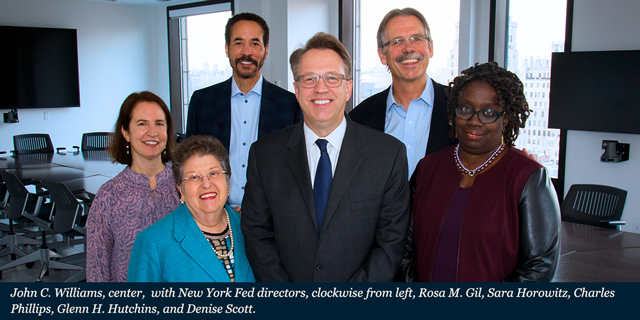
NY Fed President, The Process
Of equal importance to the final decision of the next New York Fed President is the process by which this decision was made. Today we unwind that complex process. As always, I can be reached for comments, feedback, or questions on twitter or via my website www.thebanksterpodcast.com.IntroductionI am Alexander Bagehot and you’re listening to The Bankster Podcast, the only podcast dedicated to the fascinating and ever more consequential world of central banking.A change in the guard of any institution is always accompanied with an invitation to take a look into the heart of an organization. The last year at the Federal Reserve has seen a lot of such changes, and I’d argue that the full change of the guard will be complete with the replacement of the current President of the Federal Reserve Bank of New York. In November Bill Dudley announced that he would be retiring from his post as leader of the New York Fed in the summer of 2018. On today’s episode I’m hearkening back to the roots and foundation of The Bankster Podcast - summarizing, translating, and explaining the complexities of the Centralverse. Today’s complexity - the NY Fed Presidential selection process.This episode is especially timely, not only due to the announcement of its conclusion just a few days ago, but also because the process was scrutinized and questioned more fiercely than in the past. So first I will break down the process and then I’ll end the episode by pointing out the two biggest complaints and a few of the proposed amendments to the process.Episode Notes NY Fed’s official descriptionRemember that the “Federal” in Federal Reserve System comes from the combination of centralized, government appointed leadership in Washington DC (7 of them) and the somewhat independent Reserve Banks (12 of them) spread geographically across the country. These somewhat independent Reserve Banks are chartered similarly to that of a regular corporation. There is a Board of Directors, chosen in part by the shareholders of the Reserve Bank. The Board of Directors, in turn, choose the Executives. So when, back in November, Bill Dudley announced he’d be leaving his post as President of the New York Fed we turned to the Board of Directors. As outlined in the Federal Reserve Act (most recently amended by the Dodd Frank financial reform act of 2010) there are to be 9 directors at the Reserve Bank. They break down, at the New York Fed, as follows.9 directors, broken up into three classes: A, B, C. And there are two characteristics that distinguish each of the three classes: (1) who chooses them and (2) who are they to represent.A = Three Bankers chosen by the local banks. CEO of Morgan Stanley (chosen by the large banks, representing the banks)Chairman of Valley National Bank (chosen by the medium size banks, representing the banks)CEO of Solvay Bank (chosen by the small banks, representing the banks)B = Three leaders from the public to represent the public chosen by the local banks. (agriculture, commerce, industry, services, labor and consumers)Co-Founder of a Financial Services Technology Private Equity firmCEO of a business software companyUntil a few weeks ago, the Chairman of an aerospace and auto technology company (this is the one that stepped down a few weeks ago)C = Three leaders from the public to represent the public chosen by the Board of Governors.Founder and Executive Director of the Freelancers UnionExecutive Vice President of a Community Development OrganizationFounder and CEO of a Community Health and Housing ProviderSo those nine directors make up the Board of Directors of the NY Fed.The three bankers from Class A (bankers chosen by bankers) don’t get to participate at allEligible Class B (meaning those public leaders chosen by bankers with no conflict of interest) and all Class C Directors (public leaders chosen by the Board of Governors) can participateThe eligible Class B and the Class C then choose who will be on the committeeThey initially chose 4, 2 Class B and 2 Class C (now down to 1 Class B and 2 Class C)Then the Committee goes to work“Looking for Technical and Personal” in video introduction “listening to communities, not just candidates”External search firms - for example the NY search committee selected two search firmsSpencer StuartFounded in 1956 with a global search mindset, the firm now has offices in 30 different countries. Official site.Bridge PartnersMuch smaller firm, founded in 2003, with a specific goal of providing diverse candidatesCommittee sent their pick, John Williams, to responsible Directors (The six Class B and Class C Directors - really just 5 at this stage)Responsible Directors voted in favor of John Williams, whose name was then sent to BOG for final approvalThe final step, as outlined in the Act says, the appointment of President is made, “With the approval of the Board of Governors of the Federal Reserve System” (4.4.6).In regards to what that “with approval” actually means, Peter Conti-Brown, one of my favorite Fed commentators tweeted, “It’s a maddeningly ambiguous legal structure that sometimes means rubber stamp and sometimes means BOG control. We could use some clarity.” (tweet)In that vein, Reuters reported on March 1st that, “Powell was playing a larger role than his predecessors in making his views known to the...New York Fed…noting he... stressed monetary policy expertise and...discussed specific names.” linkSo although I am not privy to the inside conversations that took place within the walls of the Fed or with those who they interviewed; I can say that the conversations took place within the selection process framework that I’ve outlined here.Two camps of complaints:John Williams is another older white guySelf inflicted wound by the committee making such a big statement about seeking for diversity.He doesn’t have market experienceDamned if you do damned if you don’tRecommendations for changingRelease candidate listTestify before Senate (Elizabeth Warren)Be confirmed by SenateBe presidentially appointed, senate confirmed Conclusion And that’s a wrap. I hope you were able to keep up today. There was a lot of information, and the process is anything but clear and concise. But of equal importance to the actual final decision is the process by which this decision was made. So when you hear about the outgoing or incoming President of the New York Fed, John Williams, you will now have some background on what went on behind the scenes for him to be selected.And speaking of explaining the complicated aspects of the Centralverse, I have some excited news. My brother and I have been hard at working creating the next chapter in the journey that began almost exactly two years ago with the first episode of this podcast. The next chapter will be found on www.centralverse.org. The site is still under construction, and that’s pretty much all you’ll see if you go there now. However, if you want early access to the Beta version, send an email to alexander@thebanksterpodcast.com. I’ll be announcing updates to the website here on this podcast at the end of each episode going forward. I’m super excited about what we’re doing there, and I know that it will serve as an excellent resource and tool for all of you Fed Watchers and anyone interested in understanding how the world works in general.Today’s episode was written, edited, and produced by me, Alexander Bagehot. Go to www.thebanksterpodcast.com to sign up for the show notes and get in touch with me directly. Thanks to all of you for listening, and I’ll see you next time on The Bankster Podcast!
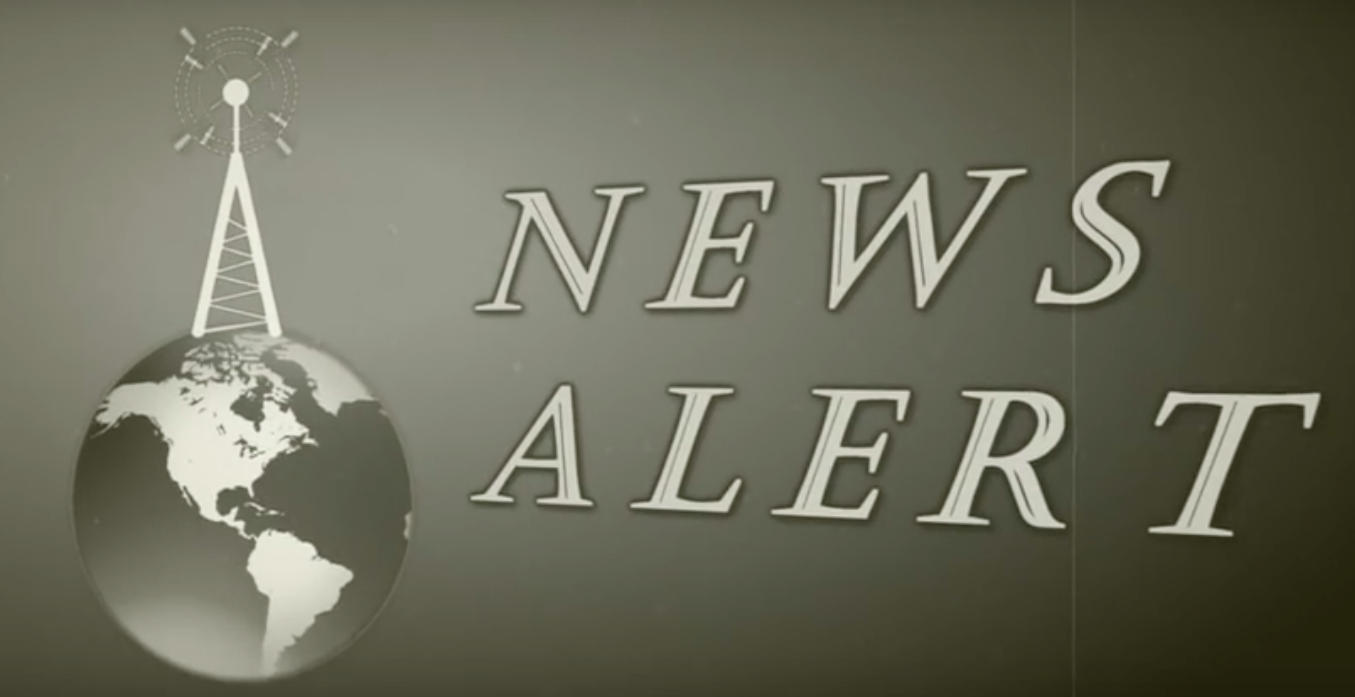
Centralverse News Flash 3/23/2018
Too many important events of the past two weeks, so we’ve started a new series called News Flash. Today’s Flashes include: Bear Stearns, The Senate Dodd Frank Bill, NYFed’s Presidential Search, and the FOMC meeting. As always, I can be reached for comments, feedback, or questions on twitter or via my website www.thebanksterpodcast.com.IntroductionI am Alexander Bagehot and you’re listening to The Bankster Podcast, the only podcast dedicated to the fascinating and ever more consequential world of central banking.I really enjoyed the responses on Twitter to the last episode of the podcast about the entertaining video produced by the Central Bank of Sweden to celebrate their 350th birthday. I was sent a few other central banking videos, my favorite of which was one produced by the Central Bank of Indonesia. Featuring a catchy tune that was stuck in my head for days, the song follows a singer as she dances around a local market showing people some of the new security features in the Indonesian currency, the rupiah.Now, a lot happened in the Centralverse in between the release of the last episode and today, and there are numerous ways to keep up with the Centralverse on a more frequent basis than the biweekly Bankster Podcast; however, between the unbelievable short attention span of the political news cycle and the March Madness basketball tournament this month, it’s very possible that you missed some of the big news coming out of the Centralverse. So I’m introducing a new section of the Podcast today called, News Flash. In each News Flash I’ll quickly go through the key Centralverse events of the previous weeks that you may have missed.One of the key goals of The Bankster Podcast and the website Centralverse.org is not only to share with you the latest news from the Federal Reserve and other central banks from around the world - it’s bigger than that. We want to enable you to follow them and keep up to date on your own. So a key part of this new section - News Flash will be not only sharing the actual news but also the key sources of the information that I used. Not only will we share the information with you but how we got the information in real time so you can be ahead of the Centralverse curve in the future. Today, four flashes: Bear Stearns, Dodd Frank, NYFed’s presidential search, and this week’s FOMC meeting. Bear StearnsFlash One:10 years ago this month one of the oldest Investment Banks in the country collapsed. Bear Stearns, founded in 1923, by 2007 had grown into what Forbes called the second most admired securities companies in the industry. It’s stock price was trading at above $170 per share and things were looking bright. Within a year that bright future would turn into a Wall Street nightmare. The company had been heavily leveraged in the mortgage securitization market (go read the Michael Lewis book and then watch the movie the Big Short to learn about mortgage securitization). Anyways, basically, when the US housing market collapsed Bear Stearns was stuck in serious trouble. Things got so bad so quickly that a fire sale was required to keep the company from having to file for bankruptcy, which would have brought the rest of the market down with it (not unlike what happened when a few months later Lehman Brothers, another investment bank did in fact file for bankruptcy). The troubled Bear Stearns was sold to JP Morgan for a meager $10 per share in March of 2008.Source One:Planet Money Indicator episode from March 16, 2018House of Cards, book by William Cohan The Senate Dodd Frank bill Flash Two:The US Senate passed a bill amending the financial reform bill that had passed after the Great Recession called the Dodd Frank act. The basic premise of the bill is to raise the regulatory thresholds. One principle in banking regulation is that the bigger the bank the more strict the regulations are. Banks are traditionally divided into three categories: community banks, regional banks, and large banks. The thresholds currently stand at about $0-10B, $10-50B, and $50+. An oversimplified summary of the changes that the Senate’s bill would do is raise those thresholds. That means that fewer banks would be classified as large and regional banks. The idea being that those banks that move down a level will see a decrease in regulatory oversight.Source Two:Politico article by Zachary Warmbrodt and Victoria Guida who I follow on Twitter NYFed’s presidential search Flash Three:The New York Fed announced that they have narrowed the search for the next President of the New York Fed down to just “a handful of candidates”. On the whole this news was greeted with somewhat perplexed expressions. From one camp there came the general sentiment that this was very much an un-announcement announcement, meaning they didn’t really announce anything we didn’t already know. And from a second somewhat stronger attitude camp resurged the proposal that the process by which Reserve Bank presidents are chosen is very opaque and needs to be updated. In order to fully understand this issue you have to understand how the Board of Directors at Reserve Banks work. Head back to episode 18 to get the full scoop on who the Directors are and what they can and cannot do. There was actually one other interesting twist that came out a day or two after the announcement that they had narrowed down the field. One of the Directors who had been on the search committee was resigning, most likely because he will be going to work for a financial institution. That really got the second camp of people concerned with the process worked up.Source Three:NY Fed’s twitter feedAn additional update regarding one of the board of directors on the search committee resigned - email notification FOMC meeting Flash Four:As expected raised the Fed Funds Target range by 25 basis points, which means by one quarter of one percent, to 1.50-1.75. That means on Friday the reported overnight bank funding rate will probably be about 1.64.Economic Projections included: 7 participants who think there will be a total of 4 or more rate hikes this year and 8 thought there would be 3 or less.Jay Powell’s first press conference as Chair. It felt like half of the questions involved these economic projections and he reiterated in a dozen different ways the important note about the projections - it’s important to not put too much stock in the median. Each of the current FOMC voters has their own models and forecasts of what the Fed should do (note that it’s not what the Fed will do). Head back to episode 9 to get an overview of the Dot Plot and then episode 20 to really learn about the important nuances in interpreting the Dot Plot.Source Four:Eight news notifications (WP, WSJ 2x, Bloomberg, Yahoo 2x, NYT, Chi Tribune)Board of Governor’s email notification for the statement and economic projectionsCSPAN, MSNBC, or any business news channel for live-streamed press conferenceConclusionYou probably won’t use all of these sources. Your level of interest in being at the cutting edge of Centralverse information may not be as high as mine. That’s ok. I hope that this episode and the future News Flash episodes will give you a broader look at how I keep up with the Centralverse, and how you can keep up on your own, whatever your level of interest. Remember that Central Banks wield exceptional power. And as the example of Flash Three today about the New York Fed’s process of selecting a new president shows, sometimes keeping track of what is happening at a Central Bank is not as easy as other parts of the government. That’s in part because the founders of the Federal Reserve designed it as such. However, it doesn’t mean we can’t follow and observe closely. Not only is it interesting for interest's sake, but it affects our finances and therefore our lives in very real ways. And that’s why they’re worth following. Sign up for the newsletter where I’ll send you one email per episode outlining the sources cited and how you can become a Fed Watcher yourself.Today’s episode was written, edited, and produced by me, Alexander Bagehot. Go to www.thebanksterpodcast.com to sign up for the show notes and get in touch with me directly. Thanks to all of you for listening, and I’ll see you next time on The Bankster Podcast!
Create Your Podcast In Minutes
- Full-featured podcast site
- Unlimited storage and bandwidth
- Comprehensive podcast stats
- Distribute to Apple Podcasts, Spotify, and more
- Make money with your podcast

